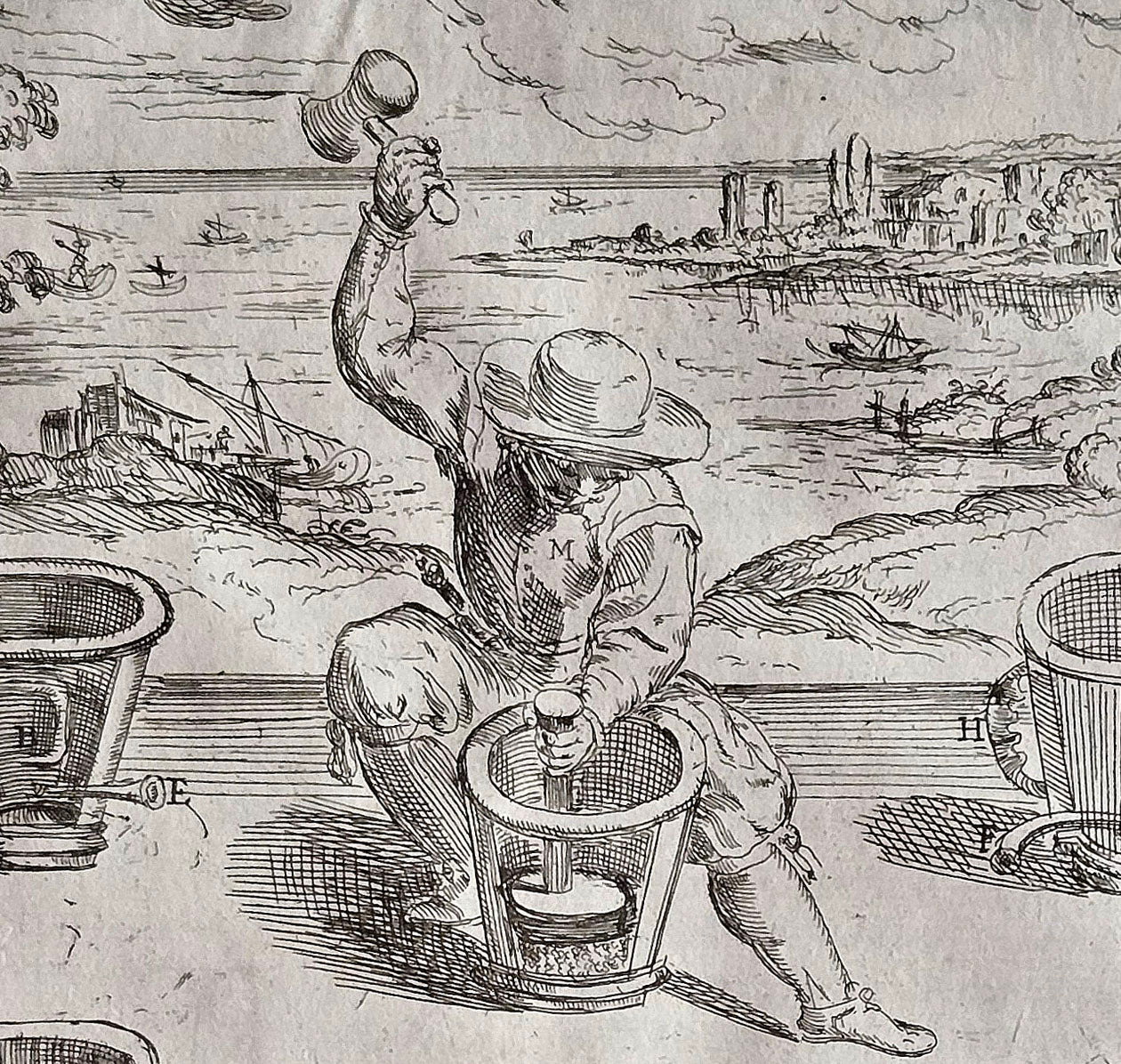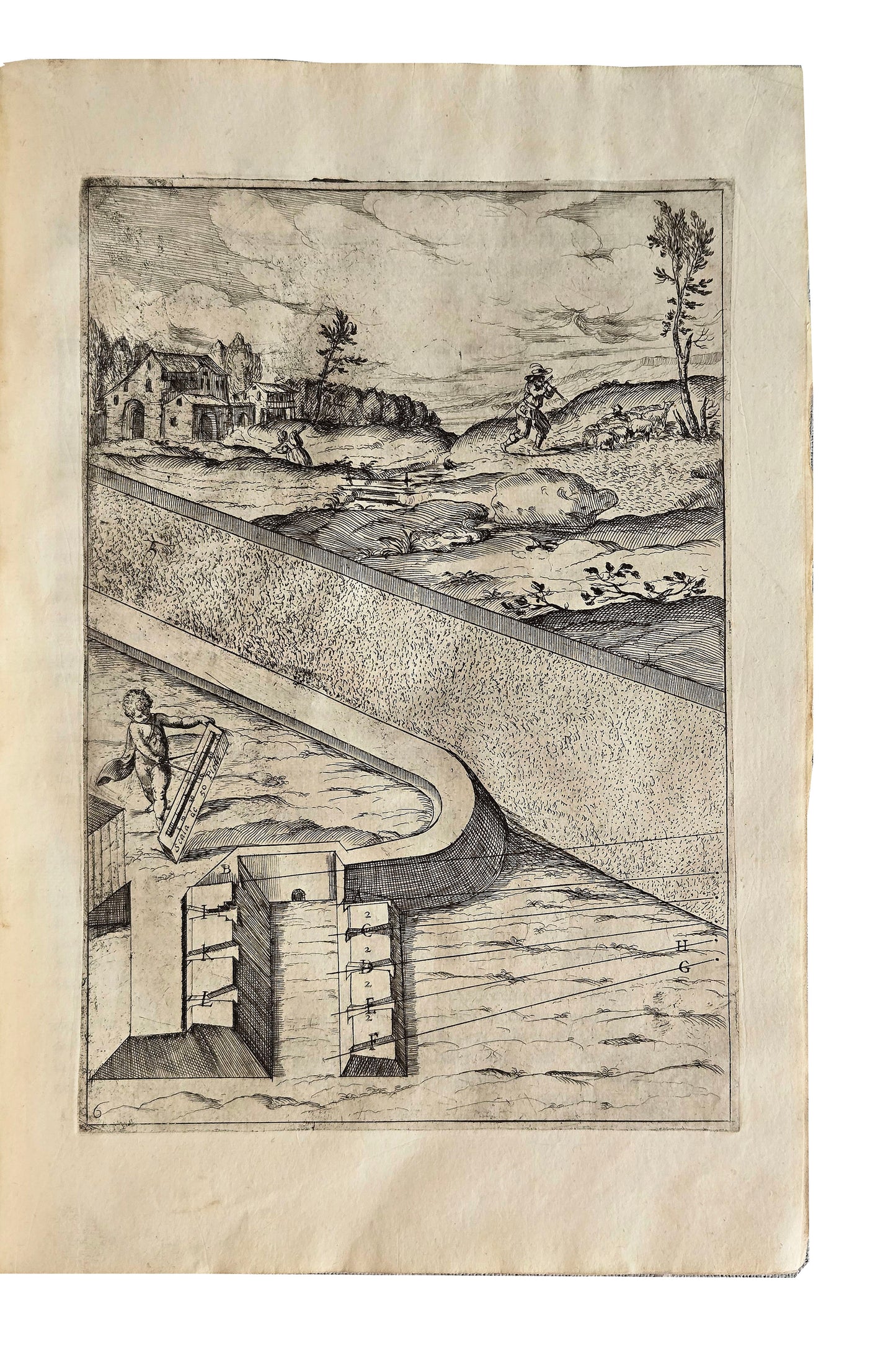Calab Rare Books
Odoardo FIALETTI
Odoardo FIALETTI
Couldn't load pickup availability
Share
La Fortificatione Guardia Difesa et Espugnatione delle Fortezze Esperimenta in Diverse Guerre. By Francesco Tensini. Three parts in one volume. [14], 84; 84; 128 pp. Illustrated with an engraved allegorical title-page by Philip Sadeler, a full-page engraved portrait of the author within allegorical border, and 11 double-page and 37 full-page copper-plate etchings by Odoardo Fialetti. Folio, 380 x 267 mm, bound in contemporary Italian vellum, title hand-lettered on spine, old shelf mark stamp. Venice: Evangelista Deuchino, 1624.
First Edition of this exceptional illustrated book. The book was dedicated by the author Tensini to the Doge of Venice and the Venetian Senate. Tensini's text and the superb etched illustrations by Fialetti described and depict the construction of fortifications created for the protection of cities of the Venetian Republic.
Francesco Tensini (1580-1630) was the most trusted and experienced of the Venetian Republic's engineers; he served for a time as military engineer in the service of the Emperor Maximilian, the Duke of Bavaria, and the King of Spain. Part one deals with the design of military architecture, optimal positions and locations, and the variety of possible fortification elements. Part two concentrates on the defense techniques to successfully protect the fortifications from outside attack. Part three focuses more on the strategy and specific modes, machinery and weapons used for assault on fortifications, including ships to ford moats, use of bridges and ladders, canon angles of attack, and techniques to crush and surmount fortification walls.
Odoardo Fialetti (1573-1638), Italian painter and printmaker, began his training during the late Renaissance. He studied under Giovanni Battista Cremonini, but when still young travelled to Venice to work under Tintoretto. Throughout his career his artistic output reflected the academic traditions of the Caracci. Fialetti's etched plates portray with fidelity the variety of fortification systems, formations for defense and attack, siege craft, strategic calculations for artillery, and ballistic devices as elucidated in Tensini's text. However, a remarkable aspect to many of the etchings is the presence of Italian seventeenth-century life which Fialetti has incorporated into the overall design of many of the etchings. The plates are also considered a monument of Italian landscape etching in the seventeenth century and foreshadow the work of Callot and Stefano della Bella.
For example, next to a fortification under seige littered with bodies of dead soldiers, one will find, either at the top of the illustration or to the side, a shepherd tending his flock of sheep, Franciscan monks walking along a road into the village with sticks and a bag over their shoulder, a man calmly reading a book under a tree, or a famer tending his fields of grain. The first plate, with two putti showing the measurement of Venetian standards of length, is signed by Odoardo Fialetti. The engraved title, within a magnificent architectural border incorporating allegorical figures, engines of war and a bird's eye view of a fortress, is attributed to Philip Sadeler, a Flemish artist living in Venice at the time, who may also have designed the full-page portrait of the author, aged 44, encased by an elaborate border showing putti with emblems of war and a vanquished Turk in lower panel. Binding a with some general wear and some staining, some pail marginal water staining, overall a very good, unsophisticated and pleasing copy with large margins and fine impressions of the etchings.
Brunet V, 699. Grässe VI, 51. BL, Seventeenth-Century Italian Books 899. Cockle, Military Books 813. Breman 305. D'Ayala, Bibliografia Militare Italiana 123. Gamba Serie dei testi di Lingua 2099. Riccardi I, 515 & II, 5, 161. Spaulding & Karpinski 153. Thieme-Becker XI, 525. Bartsch XVII, 264-301.
















